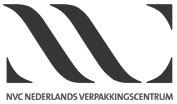Packaging standards: Supply chain applications of RFID
In March 2013 the second edition of five standards for supply chain applications of RFID has been published. The supply chain is a multi-level concept that covers all aspects of taking a product from raw materials to a final product, including shipping to a final place of sale, use and maintenance, and potentially disposal. Each of these levels covers many aspects of dealing with products, and the business process for each level is both unique and overlapping with other levels. These standards have been created in order to ensure compatibility at the physical, command and data levels. Where possible, this compatibility takes the form of interchangeability. Where interchangeability is not feasible, the standards within this suite are interoperable and non-interfering.
The standards have been developed for the different levels of the supply chain: freight containers (ISO 17363), returnable transport items (RTIs) and returnable packaging items (RPIs) (ISO 17364), transport units (ISO 17365), product packaging (ISO 17366) and product tagging (ISO 17367).
The standards define the basic features of RFID for use in the supply chain. In particular they
— provide specifications for identification
— make recommendations about additional information on the RF tag,
— specify the semantics and data syntax to be used,
— specify the data protocol to be used to interface with business applications and the RFID system,
— specify the minimum performance requirements,
— specify the air interface standards between the RF interrogator and RF tag, and
— specify the reuse and recyclability of the RF tag.
For background information you can consult the NVC World Review on Supply Chain Applications of RFID and Sensors in Packaging (World Packaging Standardisation Newsletter, April 2013).

